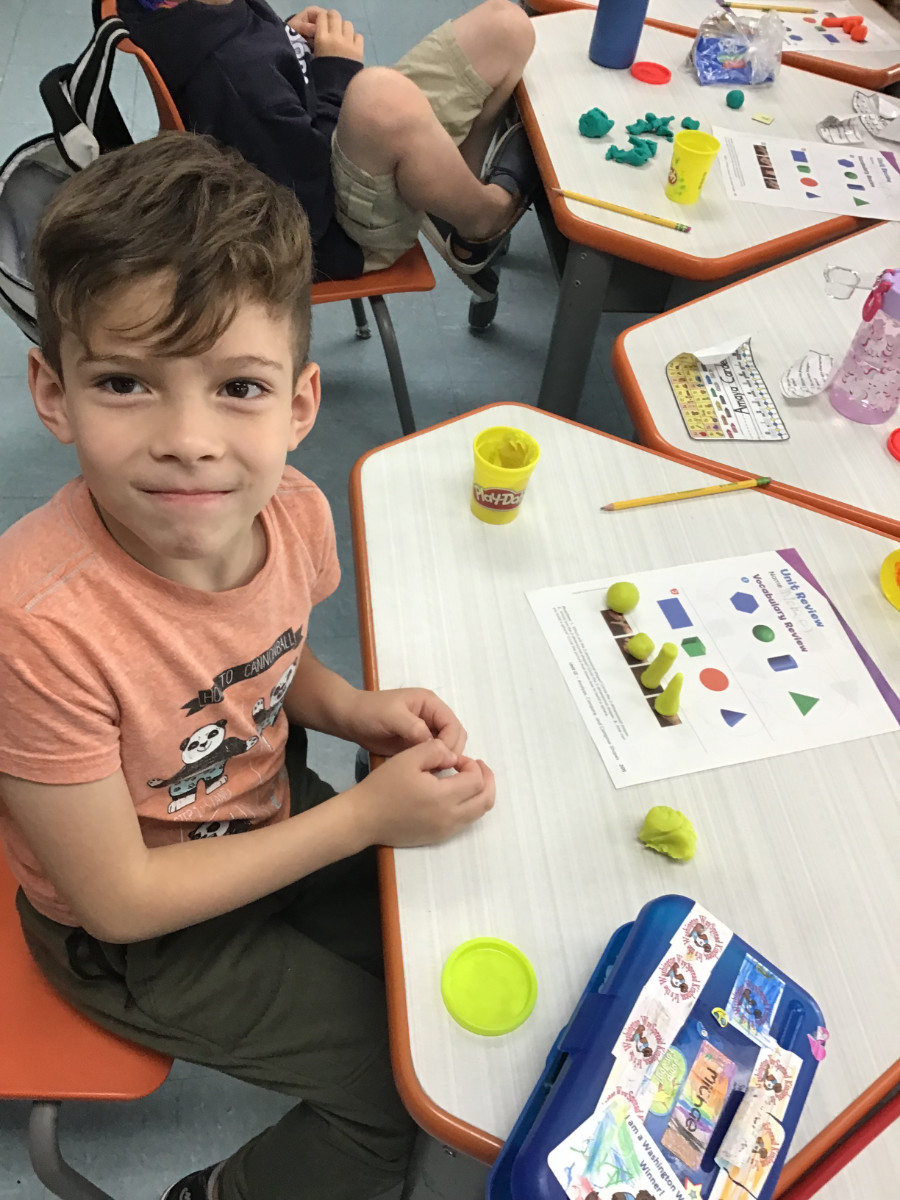Kindergarteners Use Play-Doh to Explore 3-D Shapes
May 29, 2024
Washington Primary School kindergarteners in teacher Emily Meyers’ class recently explored 3-D shapes while using Play-Doh.
“Reveal Math Unit 13 focuses on analyzing, comparing, and composing shapes,” Ms. Meyers said. “The students created cubes, spheres, cylinders, and cones as they followed visual guides. After creating the 3-dimensional shapes, the students created similar shapes in 2-dimensional forms. Conversations about how the shapes are similar and different took place. Kinesthetic or tactile learning experiences allow our students to perform physical activity to learn something as active participants.”
Play-Doh has been popular with kids for decades. It is estimated that well over three billion cans have been sold over the past 70 years. It is a modeling compound.
“At Washington Primary School, it is a priority that learning experiences for students include varied approaches to conceptual development,” Principal Michelle Richards said..
“Play-Doh modeling compound started out as wallpaper cleaner,” according to Strong’s National Toy Hall of Fame. “Joe McVicker learned from a teacher that kids usually found modeling clay too hard to manipulate. Discovering that the squishy cleaning product he manufactured could substitute, McVicker shipped some to the school. After teachers and kids raved, he offered to supply the product to all Cincinnati schools. More rave reviews followed. McVicker showcased the modeling clay at a national education convention in 1955, and word spread to Macy’s and Marshall Field’s. By 1956, the wallpaper cleaner had become Play-Doh.”
